Drimys winteri was first properly described by Sir Hans Sloane, President of the Royal College of Physicians, from dried specimens brought back from the Magellan Straits by George Handasyd in 1691, but it was not until 1768 when Mr Wallis Captain of the Dolphin brought back some of its flowers to Dr John Fothergill, a Fellow of the College, that the description was complete. He arranged for a drawing to be made by the famous botanical artist, Georg Dionysius Ehret (1708 - 1770), and a full description by the Swedish botanist, Daniel Charles Solander (1733 –1782), which he then published. For further refs see Woodville (1794).
Woodville, William.(1794) A Supplement to Medical Botany, Facsimile ed p. 123
Drimys winteri is a tall, evergreen tree with panicles of pale green-white flowers in the spring. It is the source of one of the earliest effective medicines to come from the New World. It grows in Tierra del Fuego and its properties were discovered by Captain John Winter, in charge of the pinnacle Elizabeth. He sailed with Francis Drake down the Atlantic to Cape Horn. Here they were separated in a storm and each thought the other lost. Drake went on in the Golden Hind to raid Spanish shipping and circumnavigate the globe (1577-1580), but Winter returned to England. While off Cape Horn his crew were afflicted with scurvy, but recovered after eating berries, boiled in honey (see Parkinson, 1640) The bark was brought back to England by Winter in 1579 and came to be known as Winter’s Bark. Vitamin C used to be synthesised from it.
Parkinson, John (1640) 'Theatrum Botanicum' London, Thomas Cotes p. 1652
Vigorous, upright tree with aromatic bark and oblong-elliptic to narrowly inversely lance-shaped, leathery leaves, to 20cm (8inch) long, dark green above, blue-white beneath. Produces large umbels of 5-20 fragrant, ivory-white flowers, 2.5cm (1 inch) across, from spring to early summer. Blackbirds and mistle thrush have been seen in the garden, feeding on the bluish berries. 15m (50 foot) high by 10m (30 foot) wide.
Brickell, C. (2003). A-Z Encyclopedia of Garden Plants. Dorling Kindersley. p.390
First cultivated by Philip Miller at the Chelsea Physic garden in 1739
Woodville, W. (1792). Medical Botany. Vol.2. Facsimile ed. p. 320
Some research points towards pain relieving properties.
Neuropharmacology. 2002 Sep; 43 (3):340-7 http://www.ncbi.nlm.nih.gov/pubmed/12243763
link
Captain William (aka John) Winter, in charge of the pinnacle Elizabeth sailed with Francis Drake down the Atlantic to Cape Horn. While off Cape Horn his crew were afflicted with scurvy. Parkinson (1640) writes how Winter's crew ate the berries: '... the berries grow in clusters like the Hawthorne with divers seedes in each of them. They at first knew not of any properties therein, and therefore boyled some of it in hony., to make it the more pleasant to be taken, and dried other some and made it into pouther [powder] putting it instead of Cinamon in their meats: but afterwards they found it to be singular good against the Scurvey, for divers in the shippe being troubled with that disease found remedy thereby in using it for a while.' [Winter came back to England with bark from the tree, while Drake went up the Pacific coast raiding Spanish shipping and ports, returning across the Pacific with enough bullion to pay off England's National Debt and getting a knighthood].
Parkinson, John (1640) 'Theatrum Botanicum' London, Thomas Cotes p. 1652
Other writers say it was the bark that was used by William (aka John) Winter and make no mention of the fruits - Clusius (L'Escluse) 'Libri Exoticorum' (1605) says the bark was aromatic and he removed the acridity by steeping it in honey. Dalechamps 'Histoire General des Plantes' (1753) vol 2, p 725 adds that the bark burnt the tongue and throat like pepper, and was soaked in honey to remove the acridity, and the ground up and dried bark was used to flavour meat instead of cinnamon and it cured the disease called 'Stomacace' in which the teeth fall out (viz Scurvy) by which the sailors were much afflicted. Long account and full bibliography in Murray (1787) 'Apparatus Medacaminum' vol 4 , p.557 et seq.) mentions that the berries were aromatic and like pepper, quoting Hawkins' 'Voyage in the South Sea' vol 4 p. 1390. and Edward Cliffe's 'Voyages of Mr Winter into the South sea' in Hakluyt P3 page748 et seq.. See Fluckiger for information in English.
Fluckiger, FA & Hanbury, D (1874) Pharmacographia. A History of the Principal Drusgs of Vegetable origin met with in Great Britain and British India p. 16
Dri'mys- Greek for drimys, acrid; pungent; from the taste of the bark of the evergreen tree. Winteraceae.
Winter's Bark after Captain John Winter (aka William Winter) whose crew recovered from scurvy on eating the berries (or the bark) in 1578 in Tierra del Fuego.
Stearn, W.T. (1996). Dictionary of Plant Names for Gardeners. Cassell. p.125
In Mexico and Brazil the bark is sometimes crushed and powdered up and used as a condiment.
The wood is used locally for house interiors, furniture, packing cases and boxes, and the bark has been used as a treatment for dysentery and stomach ailments.
An extract from an article written by Scott Elliot in 1903 on the RCP’s herbarium specimen sheet for Drimys winteri: “…The plant is an interesting one to pharmacists, having been known for 300 years. It was first brought to this country by… Winter, who, in one of the maritime expeditions of Sir Francis Drake, employed the plant in the treatment of scurvy, and it was subsequently used in this country as a stimulant and tonic. In the South of Chili the tree is called “Boygue” or “Boigne” by the Araucarians, and “Camelo” by the Spanish. The Araucarians have a high regard for the tree, a branch of it is carried in the hand serving as a safe conduct from one province to another, and being used when suing for peace. They distinguish three varieties, one with large leaves… used by doctors, sorcerers, and diviners in making cures and pacifying demons. For divining, the witch doctor drinks a strong decoction of the bark, and falls into a kind of frenzy, during which his prophesies are made… The second variety “od Canelo” has a smaller and rather longer leaf… This is the kind used as a symbol of peace and as a safe conduct or passport, and is used in all large ceremonials, gatherings, and assemblies. The third variety, which has a similar leaf to the others, except that it is undulated or crisped, is used to deceive the enemy when they do not know the difference between one plant and the other as a pretended symbol of peace. It was used in this way to deceive the Spaniards when they invaded Araucania. In Chili the bark is given in paralysis, being used in baths made of a decoction of the bark and leaves. It is also employed as a stimulant to healthy growth in ulcers and external cancers. A decoction is also used for ringworm and as a fumigation for dry pustules and malignant ulcers.”
Notes by Henry Oakeley from Lindley's 'Flora Medica' (1838): This tree from Tierra del Fuego, grows to 66 feet (20 metres) and is the source of ‘Winter’s bark’. It is named for Captain John Winter, in the Elizabeth, who used the bark in 1577-8, for the treatment of scurvy when accompanying the first stage of Francis Drake’s voyage around the world in the Golden Hind. The two tall evergreen trees, in flower in March and April, can be seen at the back of the oriental bed as one walks down the slope to the College dining room. They are possibly the largest in London although still quite young. The bark was an early commercial source for synthesising Vitamin C. Lindley makes no note of their anti-scorbutic properties commenting that the bark is aromatic with a warm and pungent taste and was used in Brazil as a treatment for colic.
Lindley, John. (1838). Flora Medica, Longman, Orme, Brown, Green & Longmans
Parkinson, writing about Captain Winter's men in Tierra del Fuego in 1576, writes that they found that the bark 'has a smell, not unpleasant, but of a very sharpe taste like many spices together, heating the mouth more than Pepper ...' The chemical responsible for the taste changes in the fruits would appear to be present in the bark as well.
Parkinson, John (1640) 'Theatrum Botanicum' London, Thomas Cotes 1652
I tasted the berries in November 2016 in company of Dan Scott from Woodlands TV and both of us found them quite sweet for a few seconds. The taste then turned to being most unpleasant, peppery with the intensity of chilli powder. Salivating profusely and spitting it out made no difference to the residual unpleasant taste, so I drank a mug of black coffee. Normally I find this bitter, but it tasted of sweet milky coffee. It appears that the chemicals in the fruit have the same property in altering the proteins in the taste buds to cause a distortion of the sense of taste as 'Miracle berry' from Synsepalum dulcificum. This has a chemical in it called miraculin with similar properties (without the terrible taste) which binds to taste buds and makes sour/acid foods (like lemons) taste sweet. Prof Dayan also tried them later and agreed.
Henry Oakeley, Nov 2016 anecdote
- Southern America, Southern South America, Argentina Northeast
- Southern America, Southern South America, Argentina Northwest
- Southern America, Southern South America, Argentina South
- Southern America, Southern South America, Chile Central
- Southern America, Southern South America, Chile North
- Southern America, Southern South America, Chile South
.JPG)
.JPG)
 (7).jpg)
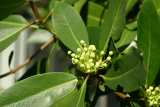
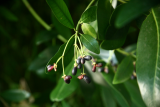
.JPG)
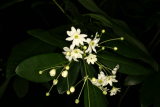
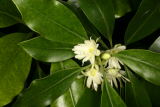
.JPG)

.JPG)
.JPG)

.JPG)
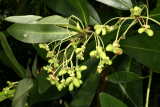
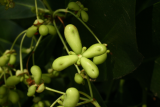
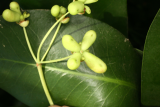
.JPG)
.JPG)
.JPG)
.JPG)
.jpg)
.jpg)
.jpg)
.jpg)
.jpg)
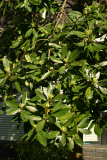

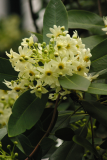


.JPG)
.JPG)
.JPG)
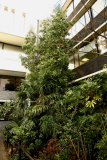
.JPG)
.JPG)
.JPG)
.JPG)
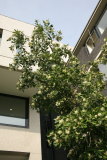
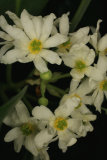
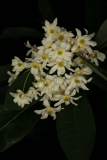

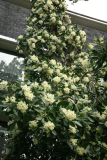
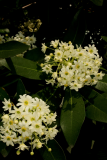
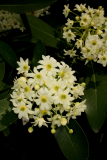
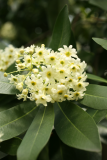
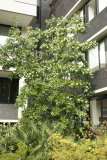
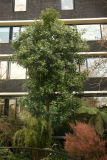


.JPG)
.JPG)
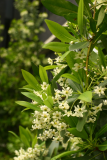
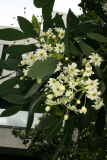
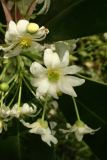
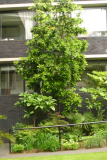
.JPG)
.JPG)
.JPG)
.JPG)
